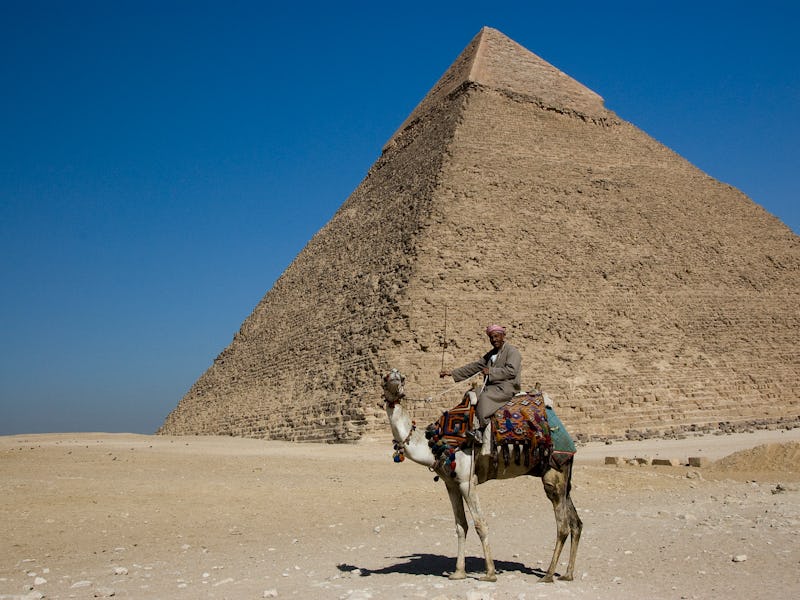Researchers Uncover a Hidden "Void" in the Great Pyramid of Giza
Using some serious physics, of course.

The Great Pyramid of Khufu is the largest and oldest of the pyramids in El Giza, Egypt. Since 2015, a team of researchers have been using some modern techniques from particle physics to explore this ancient landscape and found what they can only describe as a giant “void” that remained undetected until now.
“We don’t know if it’s a chamber, a tunnel, a big gallery or things like that,” Mehdi Tayoubi, co-director of the ScanPyramids project — the team that uncovered the void — tells The New York Times. “We have chosen the word ‘void’ and nothing else because we don’t know what this void is.”
This particular space is about 100-feet-long and located above the pyramid’s Grand Gallery. The team was able to find it using a non-invasive technique from particle physics. Basically, they placed a special film that detects muon particles toward the bottom of the pyramid and performed a kind of x-ray on the structure. Muons are subatomic particles similar to electrons except they’re heavier, and they come from cosmic rays hitting Earth’s atmosphere. The muons can then penetrate downward, losing energy as they pass through various materials. A small amount of muons detected would mean that the particles passed through something dense, whereas a larger amount would mean the muons passed through something that’s likely to be empty.
Thus, the muon detectors placed in the Great Pyramid allowed the team to “see” the void in the structure without actually venturing into the gap. Their findings were published Thursday in Nature.
ScanPyramids Mission
“The good news is the void is there. Now we are sure that there is a void. We know that this void is big,” Mehdi Tayoubi of the HIP Institute in Paris, who helped discover this gap in the Great Pyramid, tells NPR. “I don’t know what it could be. I think it’s now time for Egyptologists and specialists in ancient Egypt architecture to collaborate with us, to provide us with some hypotheses.”
Hopefully, this mysterious “void” will inspire further study. According to NPR, Tayoubi wonders if “small robots” could investigate the region for more answers. For now, all we know is there’s a giant void in the heart of the pyramid, and who the hell knows what’s inside it.
If you liked this article, check out this video of a 99 million-year-old dinosaur fossil.